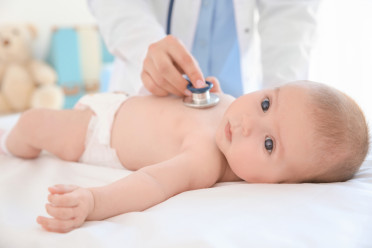Respiratory symptoms at 2 months and 1 year
Little is know about the prevalence of respiratory disease in early childhood, which is why the Elfe families were asked about their children’s wheezing and other respiratory symptoms at 2 months and again at 1 year.
Analysis showed that 77.2% of the infants remained symptom free (controls), 2.1% had wheezing at 2 months but not at 1 year (intermittent), 2.4% had wheezing at both 2 months and 1 year (persistent), and 18.3% had wheezing at 1 year (incident).
Analysis of environmental factors showed that maternal smoking during pregnancy was associated with both incident and persistent wheezing, while the use of household detergents was associated with incident wheezing.
The infants who displayed the most symptoms (nocturnal cough, excess bronchial secretions, respiratory distress) during their first year of life also had a higher risk of persistent wheezing.
Early Childhood Respiratory Health - presented by Marie-Noëlle Dufourg and Marie-Aline Charles [FR]
Infant Respiratory Health - Presented by Chantal Raherison (Inserm) [FR]
More information
Hallit S., Leynaert B., Delmas M.-C., Rocchi S., De Blic J., Marguet C., Scherer E., Dufourg M.-N., Bois C., Reboux G., Millon L., Charles M.-A., Raherison C., “Wheezing phenotypes and risk factors in early life: The ELFE cohort”. PloS One. 2018 Apr 27. [Link]


